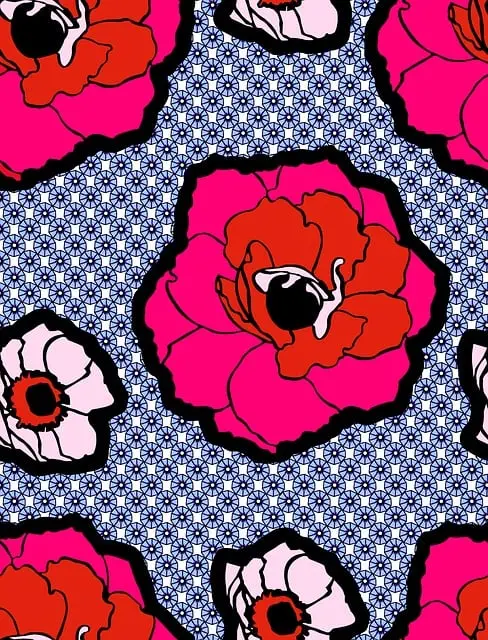The Vietnamese Kratom leaves, renowned for their unique alkaloid profile, are cultivated in Vietnam's favorable environments, offering a balanced mix of mitragynine and 7-hydroxymitragynine that can enhance energy and mood at lower doses or promote relaxation and sedation at higher doses. The 'toss and wash' method, a popular consumption technique for crushed leaf Kratom, involves placing the powder in the mouth and ingesting it with liquid, which simplifies the process while ensuring purity and maximizing bioavailability. This method is crucial for optimizing the effects of Kratom, which can vary significantly based on strain, dosage, and individual physiology. While Kratom's legal status in Vietnam is nuanced, with regulations in place to ensure responsible use and prevent abuse, users are advised to stay informed about local laws and trade controls. For those interested in the potential wellness benefits of Kratom, it is essential to approach its use responsibly, starting with a low dosage to gauge personal sensitivity and adhering to the legal framework set by the Vietnamese government.
Explore the rich biodiversity of Vietnam with an in-depth look at its prized Kratom leaves, a natural marvel gaining global attention. This article peels back the layers to reveal the essence of Vietnam’s Kratom cultivation and preparation methods, particularly focusing on the ‘toss and wash crushed leaf Kratom.’ Delve into the nuanced profiles of various strains, their effects, and the critical aspects of safe consumption within the country’s legal framework. Join us as we journey through the complex world of Vietnam Kratom Leaves.
- Unveiling the Secrets of Vietnam Kratom Leaves: An Overview
- The Cultivation Process: Growing Kratom in Vietnam's Fertile Soil
- Crushing and Preparation: Transforming Kratom Leaves into Toss and Wash Form
- Strains and Their Profiles: Exploring the Distinct Varieties from Vietnam
- Dosage and Effects: Understanding the Impact of Vietnam Kratom Leaves
- Safety and Regulations: Navigating the Legal Landscape of Kratom Use in Vietnam
Unveiling the Secrets of Vietnam Kratom Leaves: An Overview

Vietnam’s lush landscapes serve as the natural habitat for a strain of Kratom leaves that have garnered attention in botanical circles and among herbal enthusiasts alike. These Vietnamese Kratom leaves, with their distinctive characteristics, are celebrated for their unique alkaloid composition, which can influence well-being in various ways. When consuming Kratom, one popular method is the “toss and wash” technique, where users toss the crushed leaf Kratom into their mouth and then wash it down with a liquid. This method allows for immediate absorption of the plant’s active compounds, providing a swift effect. The Vietnam Kratom strain is particularly notable for its fine balance of mitragynine and 7-hydroxymitragynine, the primary alkaloids that are believed to contribute to its effects. Users often report feelings of energy and uplifted mood at lower doses, while higher doses are said to induce sedation and relaxation. The effects can be quite nuanced, with variations depending on individual physiology and the specific conditions under which the Kratom leaves were cultivated and harvested. As such, the Vietnam Kratom leaf stands out for its quality and the potency of its effects, making it a sought-after option in the realm of herbal supplements. Users looking to experience the benefits of this particular strain should consider the dosage and the preferred method of ingestion, with the toss and wash technique being one of the most straightforward ways to consume crushed leaf Kratom.
The Cultivation Process: Growing Kratom in Vietnam's Fertile Soil

Vietnam’s fertile soil and favorable climatic conditions provide an ideal environment for cultivating high-quality Kratom, a plant that has gained global attention due to its various medicinal properties. The cultivation process in Vietnam is meticulously crafted to ensure the optimal growth of Kratom leaves, which are then harvested for their beneficial alkaloids. The cultivation begins with selecting the right strain of Kratom trees suitable for the local climate and soil type. These trees are planted at a spacing that allows them to receive adequate sunlight and air circulation, crucial factors for healthy growth.
The cultivation process is further refined by employing sustainable agricultural practices that preserve the integrity of the land. Farmers in Vietnam typically use traditional methods such as composting organic waste to enrich the soil, which in turn promotes the vitality of the Kratom plants. Additionally, the leaves are carefully tended to, with farmers opting for a ‘toss and wash’ method when preparing the crushed leaf Kratom. This approach involves gently tossing the crushed leaves in water to separate the desirable alkaloids from any unwanted debris, followed by a thorough washing process. This technique ensures that the final product is of the highest purity, allowing users to experience the full spectrum of Kratom’s effects. The dedication to quality and sustainability in Vietnam’s Kratom cultivation not only contributes to the well-being of consumers worldwide but also upholds the country’s reputation for producing some of the most sought-after Kratom leaves in the market.
Crushing and Preparation: Transforming Kratom Leaves into Toss and Wash Form

The preparation of Kratom leaves for a ‘toss and wash’ consumption method involves a precise process of crushing the leaves to facilitate easier ingestion. This method, often favored for its simplicity, requires the Kratom leaves to be reduced to a fine powder or crushed into small pieces. The crushing process is crucial as it breaks down the cellular structure of the leaves, releasing more of the alkaloids—mitragynine and 7-hydroxymitragynine—that provide the characteristic effects associated with Kratom. Once the leaves are sufficiently crushed, the user can proceed with the ‘toss and wash’ technique by taking a measured dose of the crushed leaf Kratom, tossing it into their mouth, and then washing it down with a liquid, typically water. This form is preferred over whole leaves for its ease of use and consistent dosing, making it a popular choice among users seeking the effects of Kratom without the need for elaborate paraphernalia or complex preparation steps. It’s important to handle the crushed Kratom leaf with care to maintain its potency and to ensure accurate dosing for a safe experience.
Strains and Their Profiles: Exploring the Distinct Varieties from Vietnam

Vietnamese Kratom leaves offer a diverse array of strains, each with its unique alkaloid profile and effects. Among the most recognized varieties are those indigenous to the lush forests of Vietnam, where the optimal climate conditions favor the growth of this mitragynaspeciosa variant. One of the prominent strains from Vietnam is the Red Vein Kratom, known for its calming and analgesic properties. This strain is often preferred by individuals seeking relief from chronic pain or looking to alleviate stress and anxiety. The leaves are carefully harvested and then subjected to a ‘toss and wash’ method, where crushed leaf kratom is taken orally after being tossed in the mouth and then swallowed. This traditional ingestion technique ensures that the active compounds are effectively absorbed into the body.
Another significant strain from Vietnam is the White Vein Kratom, revered for its energizing and cognitive-enhancing effects. It is typically favored by those who need a boost in focus and productivity without the jittery side effects associated with caffeine. Similar to the Red Vein, the White Vein Kratom leaves undergo the ‘toss and wash’ process to enhance bioavailability. The unique environment of Vietnam contributes to the distinct alkaloid composition found in these strains, setting them apart from those cultivated in other regions. This geographical specificity is a key factor in the different experiences reported by users, making each kratom strain not just a product but an experience shaped by its terroir, much like fine wines or exotic spices.
Dosage and Effects: Understanding the Impact of Vietnam Kratom Leaves

Known for its distinctive alkaloid profile, Vietnam Kratom leaves have garnered attention within the herbal supplement community. When considering dosage and effects, it’s crucial to approach kratom with caution and informed guidance. The typical method of ingestion for crushed leaf kratom is the “toss and wash” technique, where users place the desired amount of kratom powder into their mouth, followed by a beverage to help swallow and neutralize its bitter taste. The effects of kratom can vary significantly based on factors like individual physiology, tolerance, and the specific strain of kratom used.
For those exploring Vietnam Kratom leaves, it’s essential to start with a low dosage to gauge personal sensitivity. Commonly, a moderate dose for experienced users ranges from 4 to 8 grams of crushed leaf kratom, administered through the toss and wash method. This amount can produce stimulating effects such as increased energy, focus, and mild euphoria, often associated with strains like Maeng Da or White Vein Thai. Conversely, higher doses, typically above 8 grams, may lead to sedating effects, including relaxation, pain relief, and improved mood, more characteristic of Red Bali or Indo strains. It’s important to note that the duration of effects can last from 2 to 5 hours depending on the dose and individual metabolism. Users should always prioritize safety by adhering to recommended dosages and considering their unique body response when incorporating Vietnam Kratom leaves into their wellness routine.
Safety and Regulations: Navigating the Legal Landscape of Kratom Use in Vietnam

In recent years, the use of Kratom leaves has garnered attention in various parts of the world, including Vietnam. The traditional method of consuming Kratom in Vietnam involves a practice known as the “toss and wash,” where users toss crushed leaf Kratom into their mouths and then wash it down with liquid, often water. This method is a common way to ingest the plant’s alkaloid-rich leaves, which are believed by some to have various effects, from pain relief to mood enhancement. However, as with any substance that alters one’s mental or physical state, safety and legal considerations are paramount.
The legal landscape of Kratom use in Vietnam is complex and subject to change. While Kratom is not explicitly banned in the country, its regulatory status can be murky. The Vietnamese government has historically controlled the cultivation and trade of Kratom through various decrees and regulations aimed at preventing abuse and ensuring public health. These measures often focus on the proper registration of Kratom vendors and the monitoring of its sale for medicinal purposes, as opposed to recreational use. Users are advised to stay informed about local regulations and to adhere strictly to any guidelines set forth by the government. It is crucial for individuals interested in using Kratom products like crushed leaf Kratom to understand the current legal status and to ensure compliance with all relevant laws and regulations to avoid legal repercussions or health risks associated with misuse of the substance.
In conclusion, Vietnam’s fertile soil and favorable climate conditions provide an optimal environment for cultivating high-quality kratom leaves. The intricate process of transforming these leaves into the popular ‘toss and wash crushed leaf kratom’ form is a testament to the skill and tradition behind Vietnamese kratom production. With several distinct strains, each offering unique effects, enthusiasts can choose the variety best suited for their individual needs. It is crucial for users to be mindful of proper dosage to maximize benefits while adhering to local regulations. As Vietnam continues to refine its cultivation and preparation methods, it remains a significant player in the global kratom market, offering products that are both effective and legally compliant within its borders.






